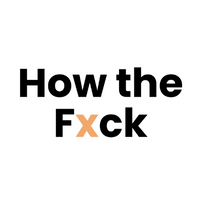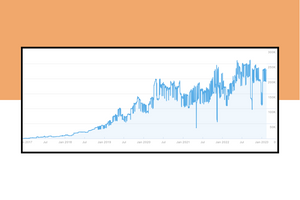Learn how eCommerce SEO expert, Louis Smith, increased a fashion retailers revenue by 22% in 12 months.
eCommerce SEO expert, Louis Smith, came on the podcast this week to talk through one of his case studies.
When he started working with this fashion brand, they'd grown rapidly through paid acquisition channels.
SEO hadn't been a focus at all, so they had a ton of technical issues, content strategy needs, and best practices to implement across the board.
We look at what those changes were and why they were pivotal to success.
In the full teardown [below], you can watch extra videos, get concepts explained, and deep dive into this full strategy.
Expect to learn
⚡ Why product coverage is so important in eCommerce SEO. But why there are still benefits to being a niche brand.
⚡ Why you shouldn't build all your backlinks to your product pages, and what to do instead.
⚡ Building the perfect navigation menu for SEO and other internal linking best practices.
⚡ Finding opportunities for category pages and why you probably need more of them.
Table of contents:
- Intro: eCommerce SEO tips
- Part 1: Ranking category pages [and website architecture tips]
- Part 2: Creating a content strategy
- Part 3: Fixing technical issues
- Part 4: Growth results
Quick Enterprise eCommerce SEO Tips
Before we dive head-first into the case study, here are some quick learnings on eCommerce SEO.
How is eCommerce SEO different from other types of SEO?
Non-eCommerce SEO, like service-based SEO and local-based SEO, typically involves:
- Creating landing pages
- Creating content (blog posts)
- Building topical clusters
- Building a logical internal link structure, and similar
While all of those principles apply in eCommerce SEO, according to Louis, eCommerce SEO is a whole different ball game.
The key difference between traditional blog SEO and eCommerce SEO is the concept of product coverage.
Product coverage - why so important?
⚡Definition: Product coverage of an eCommerce website is quite simply the range of products it offers. The bigger the product coverage, the better the website will rank in Google.
For example, the intent behind the keyword white t-shirt is to browse lots of products. Naturally, online stores that have many different white t-shirt options will come out on top of the search results.
“The best thing about enterprise eCommerce brands is that they have this power switch, I like to call it. They can flip the switch and that can push the pages to the top of Google. Because they have that authority, they have that product coverage.” - Louis Smith
Louis gives an example:
“If you’re gonna do a marathon and you search for running trainers, Google anticipates you’re gonna be looking further in-depth than that. There’s going to be different running trainers, different sizes, different colors, different brands. So Google wants to provide that customer the website that offers all of [the product variations]. That’s what’s important to Google today.”—Louis Smith
In short, the more products and variations you have to browse, the better you’ll do. This naturally favours brands with a larger product range (i.e. large stores).
Enterprise eCommerce SEO vs small brand eCommerce SEO
If product coverage is crucial for eCommerce SEO, doesn’t that mean that bigger brands that offer more products (such as Amazon, Asos, Walmart, etc.) are always going to be on top of the search results?
Yes and no.
In terms of SEO, bigger eCommerce brands have the advantage of:
- Higher domain authority
- Larger number of products
- Higher number of backlinks to their pages
However, small and medium brands have the power of niche relevancy - finding a highly specialized gap in the market they can fill in better than a big brand can.
At the same time, bigger brands also face their own set of challenges, such as:
- A lot of red tape makes fast decision-making near impossible
- Setting up technical SEO for international rankings (including deciding between subdomains and subdirectories - here’s a neat Twitter thread by Rand Fishkin on the matter)
“With enterprise, it’s almost like you’re shooting a moving rabbit where you get one chance. [...] You’ve got to be critical in what you’re saying and what you’re recommending. You’ve gotta be critical of the why.” - Louis Smith
How to prioritize decisions in enterprise-level SEO
Because of how strict enterprise eCommerce brands can be with making changes on their website, an SEO might have only a limited amount of time and resources to make the biggest possible impact on their bottom line.
So, how do you prioritize what’s first? How do you make strategic decisions and push for them?
- Create a mini case study. Look at the data you have in Google Search Console and other tools at your disposal. What will bring in quick yet significant wins? For example, keywords that are close to the top 10 positions are perfect opportunities to optimize for.
- Create a revenue growth model. Prioritize SEO tasks that will have the highest impact on revenue. Find an example on how to do this in our Typeform case study.
- Communicate effectively. Once you identify the steps you want to take, you need to get buy-in from the management to execute on them. Here’s how Louis does it:
“A lot of the bigger brands I’ve worked with - the project managers are under so much stress. [...] They can come across as quite arrogant sometimes, but you know, they’re just under pressure. I understand that. I’d get them on a call and I’d explain, This is why we need to do it. We need to explain to your manager that this is going to lead to revenue, potentially. So this is why it’s a priority.” - Louis Smith
Linking your efforts to higher potential revenue (especially with data to support your claims) will never fail.
The Case Study: How a global enterprise eCommerce brand reached $80M in MRR
Background
Company: Global fashion eCommerce brand (name confidential)
SEO status at the start: No SEO work done at all; company grew via paid advertising to £80m monthly revenue
“There was no SEO leading it. They did grow absolutely phenomenally, but they were doing mainly 90% paid.” - Louis Smith
Challenge:
- Many orphan pages
- Ranking for different countries with the wrong domains - wrong geo stack
- Bringing in the wrong traffic
- Bad UX
Tech stack:
- Wordpress
- Completely custom stack on top of WP
“We had to put the strategy in place to make sure we’re ranking in the right country, that everything is in the right place. Building on top of the 20% that was working. With any website, I always say that 20% of the website probably brings in 80% of the revenue. So how can we focus on that and build on top of that?” - Louis Smith
Here’s what you will learn from this case study:
- Building out best practice category pages
- Setting up proper navigation menus
- Building out support content + content strategy for eCommerce
- Backlink building strategy for eCommerce
- Adding product review blogs for your own products
- Importance of product coverage in eCommerce SEO
- Fixing technical issues


